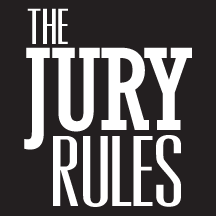Clemens jurors return not guilty verdict after lack of credible evidence
Unpacking post-trial comments by jurors in the Roger Clemens perjury trial, it appears the entire verdict came down to one thing: lack of credibility of the star witness. The Washington Post reports that the two-month trial essentially came down to determining who was telling the truth:
When the jury of a dozen Washingtonians finally began deliberating the perjury case against baseball legend Roger Clemens after nine grueling weeks, it came down to one question: Who lied? Jurors interviewed Wednesday after the star pitcher’s acquittal June 18 said it did not take long for the panel to decide that the government’s key witness, Clemen’s former strength coach Brian McNamee, had too much baggage to be trusted.
Based on the Clemens juror’s descriptions of McNamee’s testimony, it seems the prosecutors could have learned something from Rule 10 in our book – The Jury Rules – about the importance of Presenting Credible Witnesses. In one of our post-trial interviews, a juror equated cross-examination to a lie detector test and disclosed to us that witnesses who withstood cross-examination without altering their stories impressed him.
“I think the thing that I think made a good witness or a credible witness is someone who can actually stand up to the cross examination with the same answers they had previously. It’s just like taking a lie detector test—you can pass a lie detector test if you tell the truth. And most people don’t realize that the truth is the thing that works for the jury, because just like the judge can tell when somebody’s lying, most jurors can, too.”
The logic behind this is simple. If he tells the same story on direct as on cross, the witness will earn the respect of the jury. If the jury respects a witness as credible they will be able to do two things. First, they can rely on this witness. Second, they use the fact that the witness withstood cross examination to argue that this is the one witness in the whole trial who should be believed or that this witness should be believed over a witness who wavered. In other words, it gives the juror something to use to make his point in the jury room.








